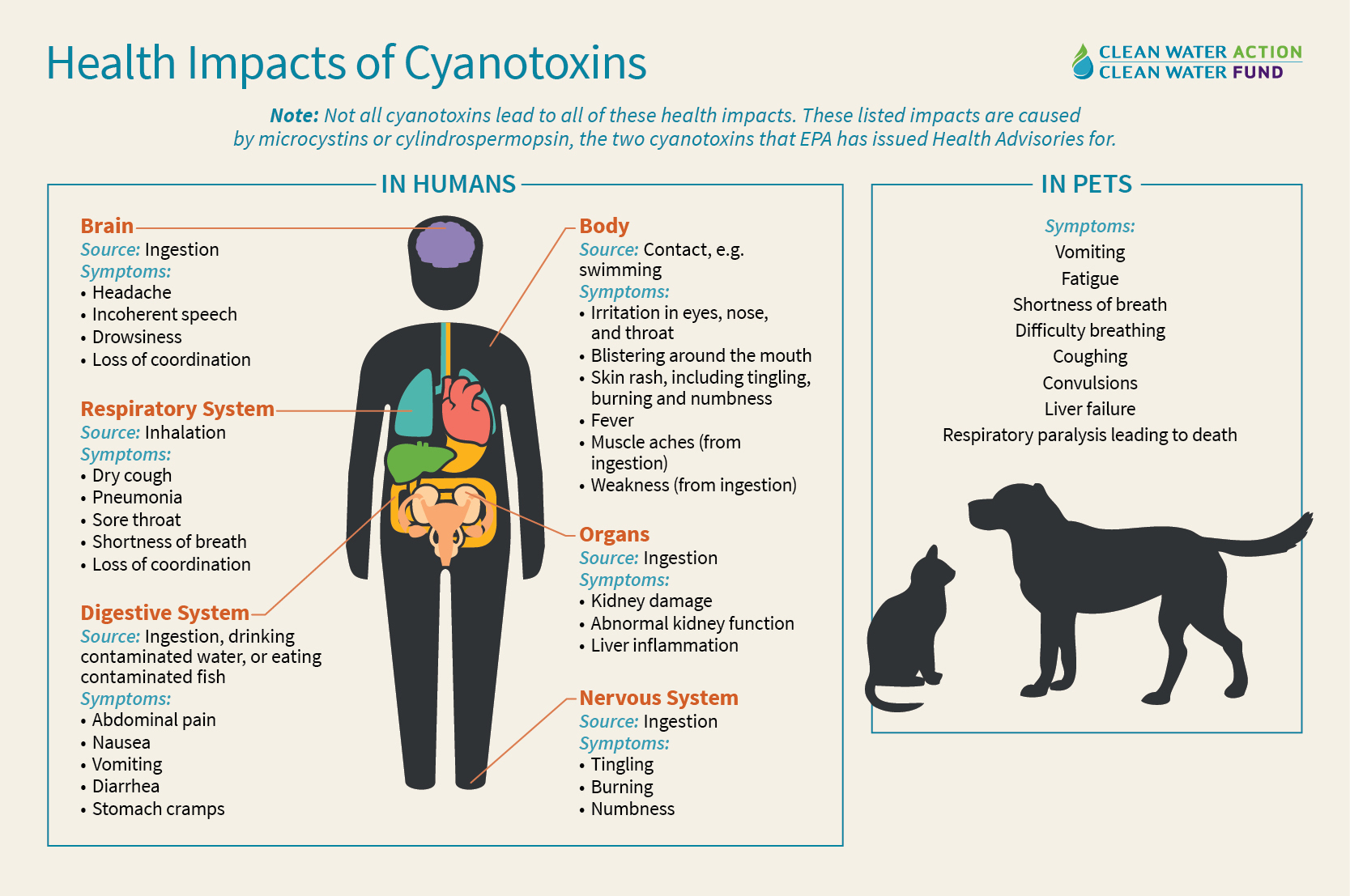What do dog deaths in Fredericton, a State of Emergency in Salem, Oregon, and vacuuming lakes in Florida all have in common?
All of these events over the past year have been triggered by microscopic organisms called cyanobacteria.
Knowing how to spot cyanobacteria in water can help you and your pets avoid serious health effects when swimming.
What Are Cyanobacteria?
"Cyanobacteria, also known as blue-green algae, are photosynthetic bacteria naturally present in surface waters in low or moderate numbers."
Cyanobacteria can occur as single cells or in groups, such as colonies (bunches) or filaments (long threads).
Buoyant cyanobacteria, such as anabaena and microcystis, may float upward when mixing is weak and accumulate in dense areas, which we call surface blooms.

Growth Factors
Environmental factors that cause the growth of cyanobacteria include:
High concentrations of phosphorus (> 25–50 µg total phosphorus per litre): fertilizers from farms are washed into lakes and streams.
High water temperature (> 25 °C): the ocean naturally absorbs heat but the build-up of greenhouse gases in the atmosphere increases the amount.
Temperature gradient: as lakes melt in the spring, water near the surface warms faster than deep water.

Health Impacts
Breathing in or swallowing cyanobacteria can cause negative health effects in humans:
Brain
headaches
drowsiness
loss of coordination
speech difficulties
Body
fever
muscle aches & weakness
mouth blisters, skin rash, irritation in the eyes, nose & throat
Respiratory
shortness of breath
dry cough
pneumonia
sore throat
Digestive
abdominal pain & cramps
nausea
vomiting
diarrhea
Organs
kidney damage or disfunction
liver inflammation
Nervous System
sensations of tingling, burning, or numbness
It can also harm your pets — leading to liver failure, respiratory paralysis, or death — so keep an eye out for these symptoms:
coughing, shortness of breath, or other breathing difficulties
fatigue
convulsions

Quiz
You're walking with your dog along the lakeshore and you see blue-green algae on the water. What should you do?
Take Action
Help your local authorities spot cyanobacteria so they can treat it and keep your local water supply safe for swimming and drinking!

If you see cyanobacteria on the surface of a body of water in your area:
Your feedback matters to us.
This Byte helped me better understand the topic.
